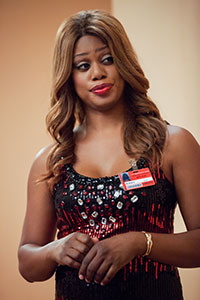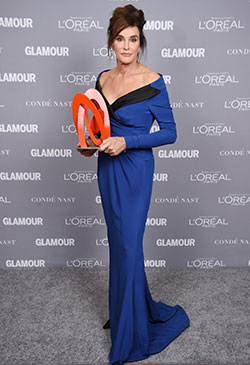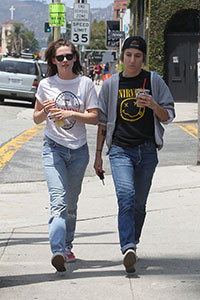2015: it wasn’t how we looked, it was how we felt that mattered

Roula Khalaf, Editor of the FT, selects her favourite stories in this weekly newsletter.
In some ways, a best-dressed list is an arcane idea. Clothes are clothes, and thin people tend to look rather better in them. End of story. But this year the subject of style and attitude had an especially powerful counter-narrative: it wasn’t what you looked like that counted but how you felt. This was the year when dressing according to your inner conviction, or elective dressing, came of age.
Rachel Dolezalwas the first to hit the screamers. The president of the National Association for the Advancement of Colored People in Spokane, Washington, was forced to resign from her position after being outed as a white woman who was passing as black.

Despite having what was revealed to be avowedly Anglo-Saxon DNA (with a possible sprinkling of Native American), in addition to blonde hair and a creamy, if somewhat Tangoed complexion, Dolezal insisted she had been identifying as black since childhood. From the age of five, she explained, “I was drawing self-portraits with the brown crayon instead of the peach.” The case ignited a furious debate about race appropriation and ethic identity, further fuelled by Dolezal’s insistence that rather than misrepresent anyone her deception had been built on a personal conviction. “I wouldn’t say I’m African American,” she conceded, “but I would say I’m black.”

Dolezal’s elective ethnicity was widely criticised by the commentariat, and she became a laughing stock on television sketch shows across the world. By contrast, Bruce Jenner’s transformation into Caitlyn, after a full surgical gender reassignment which she debuted on the cover of Vanity Fair in June, was met with near rapturous praise.
The former athlete and winner of the gold medal for the decathlon at the 1976 Olympics began transitioning back in the 1980s but had suspended treatment when he became fearful about the consequences. He found temporary respite from his gender turmoil in the bosom of Kris Kardashian, the outspoken matriarch with whom he starred, with their conjoined families, in the reality show Keeping Up with the Kardashians.

Jenner’s reincarnation coincided with an explosion of androgynous clothes on the catwalk and the emergence of new cultural icons, including the terrific Jeffrey Tambor, who plays the transitional Maura Pfefferman in the Amazon Prime series Transparent, and Laverne Cox, the transgender star of Orange is the New Black. It introduced also a new lexicon of gender sensitive vocabulary: fluidity, feminisation, elective dressing, sexual transition.
Who or what anybody decides to call themselves today cannot simply be ascribed to their biological make-up. Nor to what they look like. The actress Kristen Stewart and star of one the most lachrymose pieces of heterosexual pornography in recent times, The Twilight Saga, has been dating a woman for a year. But she refuses to be defined by the terms gay or straight. “If you feel like you want to define yourself, and you have the ability to articulate those parameters and that in itself defines you, then do it,” she somewhat opaquely told Nylon magazine in August.
Students registering at the State University of New York are today offered seven options when stating their gender and eight for their sexual orientation: “straight, gay, lesbian, bisexual, pansexual, queer, questioning or unsure”. At University of California, Los Angeles, gender options are restricted to a meagre six. There’s a mania in New York right now to provide sufficient “gender-neutral” restrooms.

Even the Pantone “colour” of 2016 was a gender-sensitive coupling, Rose Quartz and Serenity, colours once described in the old world as baby pink and baby blue and no more appealing now than they were then.
It’s a brave new world we enter in 2016. Sadly, the only fluidity still unchallenged is that of age. Twenty-something actresses are still cast as the nubile wives of hoary old Hollywood veterans, models are still prepubescent and women still need a megaphone to command attention post-menopause.
Maybe, next year, we can finally address that unfairness. Maybe I will transition into a medieval or Victorian attitude — because I don’t recognise the laws of western hegemony that insist this be the 21st century. Maybe we could elect to wear T-shirts all winter because our inner voice tells us that it’s summer.
For my part, I’m going to tell people I’m 120, because I refuse to be constrained by the construct of time. At least it will be an excuse to buy a Prada granny sweater, right? After all, as with most transitions, time fluidity demands a whole new wardrobe.
Jo Ellison is the FT’s fashion editor
Comments